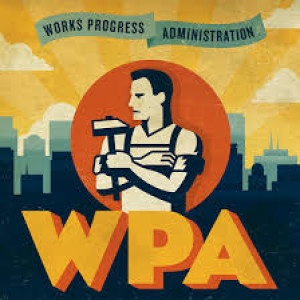

On this day in labor history, the year was 1935.
That was the day President Franklin Roosevelt issued Executive Order 7034, establishing the Works Progress Administration.
The WPA employed millions in public works projects during the Great Depression.
As many as 8.5 million Americans worked for the WPA at some point, between the years 1935 and 1943.
At its height, over 3 million Americans were working WPA jobs.
These jobs included the construction of roads, bridges, utilities and parks.
It also meant the construction of new schools, libraries, public buildings and housing.
Many WPA jobs also employed musicians, artists and writers in literacy and art projects.
The program’s goals were to provide one job to every household suffering long-term unemployment.
Some of the most famous projects include LaGuardia Airport in New York City, Blue Ridge Parkway and Great Smokey Mountain National Park.
Artists like Jacob Lawrence and Mark Rothko were employed at the Federal Arts Project.
Historian Erik Loomis notes that the Federal Writers Project began the field of oral history with extensive interviews of surviving ex-slaves.
The Household Service Demonstration Project trained tens of thousands of women for domestic employment.
The WPA also bolstered federal funding for school lunches.
The program was initially criticized for underemployment of African-Americans, who suffered disproportionately during the Depression.
But many black leaders later hailed the WPA as providing job opportunities to blacks and keeping race discrimination to a minimum, at least in the North.
The Right attacked the program as a hotbed for Communists and a scheme to build Democratic Party patronage.
By 1940, WPA projects shifted toward war preparation and defense-related projects.
When the country reached full employment in 1942, the WPA ceased to exist by July of 1943.
More Episodes
All Episodes>>You may also like
Create Your Podcast In Minutes
- Full-featured podcast site
- Unlimited storage and bandwidth
- Comprehensive podcast stats
- Distribute to Apple Podcasts, Spotify, and more
- Make money with your podcast











